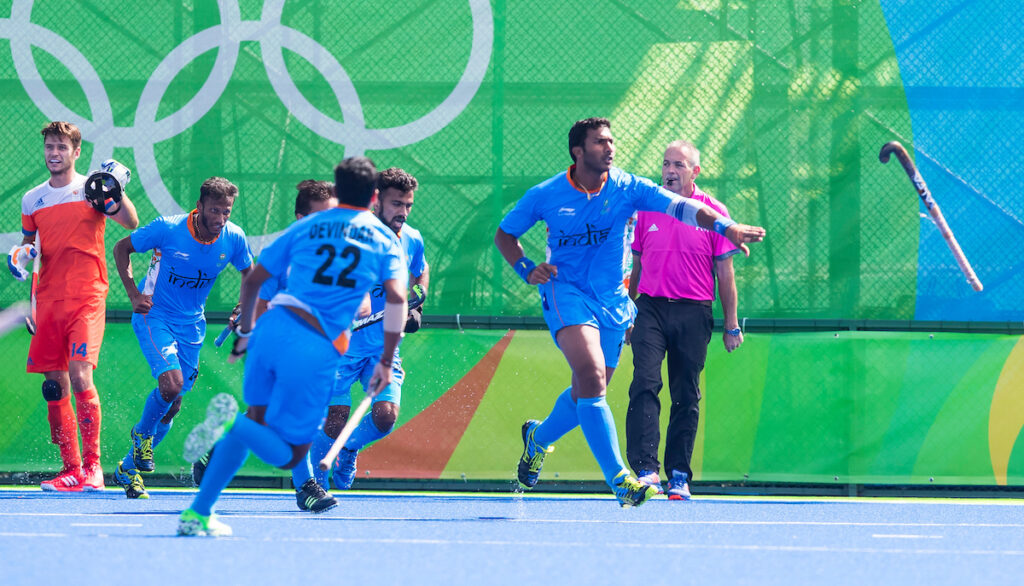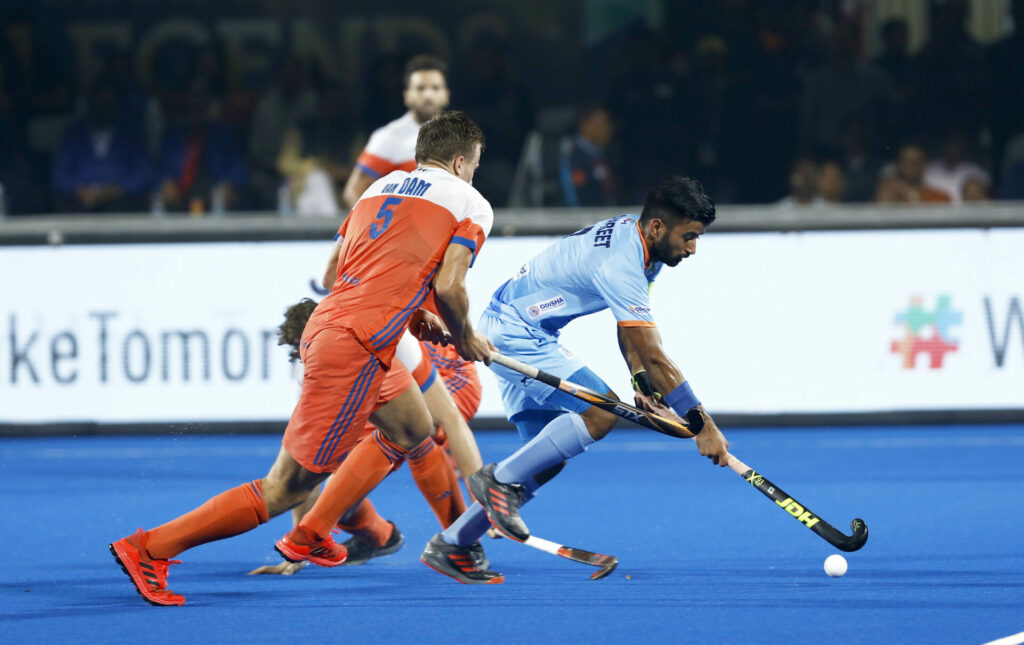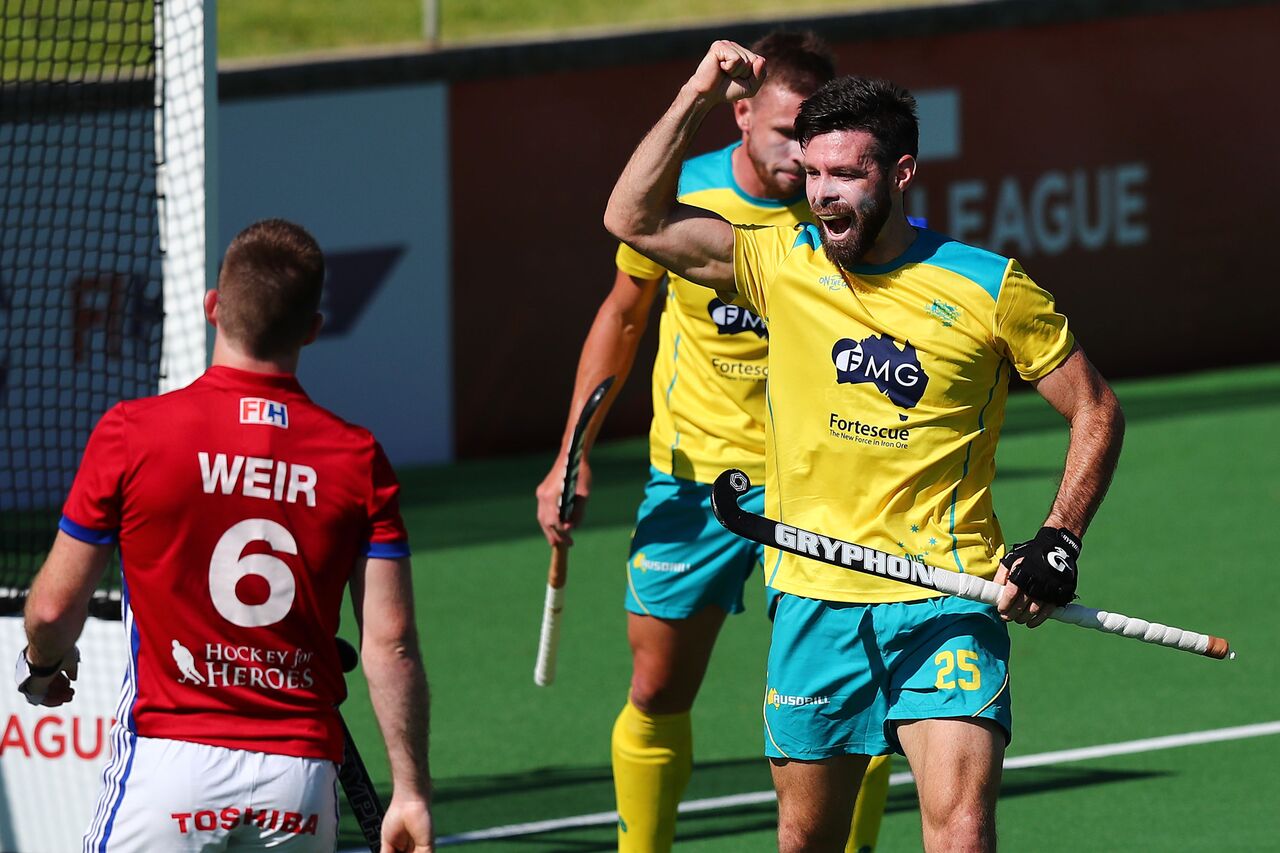With so much uncertainty, the 2020 Olympic hockey competition is set up to be one of the tightest in decades. Rupert Barker, of hockey21.com, runs the rule over Pool A in the men’s event.
Argentina
Los Leones arrive at every major tournament as an enigma. They undoubtedly have a raft of talent at the top of the squad, but do they have the depth and how will their unusual playing style fare this time around? Pedro Ibarra controls the game from the back, often slowing it right down to walking pace. This contrasts the changes that we have seen from other sides. In particular this year’s Euros matches were faster and more hectic than ever.

The side do not have Gonzalo Peillat anymore but do have Jose Tolini, whose penalty corner exploits are perhaps even more impressive than those of Peillat. Casella and Vila provide plenty or pace and skill up front. They are more than capable of winning the corners for Tolini to fire home, as well as to score themselves from open play.
Ignacio Ortiz in the midfield has impressed recently and can accelerate the play with great awareness. They won’t provide the fastest hockey of the tournament and possibly won’t create that many chances, but they are likely to be very clinical when they do. Will their back line have the speed to match what’s thrown at them and can Tolini’s rockets propel them all the way?
Australia
The Aussies looked to attack with their trademark pace and aggression in their recent Pro League matches. They have a plethora of top quality players to choose from all over the park, but particularly in attack. Tom Wickham’s power and quickness would surely have seen him selected for any other side in the tournament, but so strong are the Kookaburras that he does not get a look in. Aran Zalewski will be absolutely crucial, arguably the finest player in the world, Zalewski dominates the middle of the park and makes Australia tick going forward.
Jake Whetton has matured in recent years and looks slightly less frenetic on the ball. He is releasing other players faster and helping their speed of attack. From the set piece Blake Govers provides a short corner option that rivals the very best in the world, but can they convert when he is not on the pitch?
The transfer round the back from the Aussies is impressive, however in recent history they have begun to make unforced errors and give the ball away in crucial areas. New Zealand recently exposed the occasional lapse in concentration at the back as well. Essentially, can Australia score 4 or 5 goals to win every match and get the gold?
India
India made an impressive start to the Pro League and showed off their world renowned skill. They move the ball with great pace and look to go forward at every opportunity, which can result in goals irrespective of the run of play. Midfield talisman Manpreet Singh can dictate the game and the likes of Dilpreet and Mandeep up front will cause problems for any defender.

However, their strength can also serve as their weakness. India’s constant urge to go forward results in more regular turnovers of possession, often in dangerous areas of the pitch. Their defence has talent and includes penalty corner specialist Rupinder Pal Singh. However, his lack of pace may well be exploited in a tournament of this level. India will certainly provide some entertaining games with plenty of chances for both sides, but do they have the consistency to be a genuine gold medal contender?
Japan
The hosts have made great strides forward in recent years but will be denied the 12th man and a full house at the Oi Stadium. Expect to see the Japanese sit back in a half court press for the majority of the game, almost waiting for the opposition to force the ball onto their sticks.
They will put pressure on in the deep corners, but even then they are looking for errors rather than proactively winning the ball. Going forward the Samurais are incredibly patient and are happy to keep the ball until they spy a gap in the opposition’s defences.
They don’t quite have the quality or creativity of some of the bigger sides going forward, but they will seize on chances presented to them. The likes of Zendana, who plays his league hockey in Australia, provides a threat from the set piece. The Japanese have troubled sides like New Zealand in the recent past, but can their organised defence withstand the barrage from the world’s top teams?
New Zealand
New Zealand go into the Olympics off the back of a tricky Pro League, but will provide a tough test for all opponents. Blair Tarrant leads the Black Sticks from central defence. Alongside Shea McAleese, he acts as quarter back, firing passes all over the park. This long range passing threat combined with right back Kane Russell’s penchant for marauding up the pitch make New Zealand a side who can truly turn defence into attack.

Once in the final third, the forwards offer skill and Sam Lane is a master at earning outcomes in the D. Off the ball they are strong, committed and physical, making them hard to break down.
The Black Sticks main issue comes when they turn the ball over in the midfield, which happens with far greater regularity than they would wish. Irrespective of the defensive unit, no side can win at this level if they give the ball away in the middle of the pitch. New Zealand will run a lot of teams close, but do they have the midfield to dominate a tournament?
Spain
The Spanish show great passion and flair in all of their matches and the Olympics will be no different. They will pressure the ball carrier and give opponents very little time on the ball in the Spanish half. Don’t be surprised to see a few free hits and the odd card when this side take the field. Xavi Lleonart is a genuine talent up front and he can cause defenders massive problems, although his temperament has been known to get the better of him on occasion.
He is joined in the forward line by Pau Quemada who has the ability to score from open play as well as set pieces. The Spaniards are often involved in close matches and press hard from behind, resulting in some wonderful come backs over recent years.
However, lapses in concentration at the back and penalty corners given away to readily can also cause them to be vulnerable in the latter stages. Can Spain beat the very top sides? If they are within three goals with five minutes to go, then don’t count them out.
The Pool where anything can happen
The only three certainties in life are death, taxes and Australia qualifying from Group A. Japan will struggle to get into the top four, but after that it is genuinely open. The rankings guide would suggest that India take a comfortable second, with Argentina third and that Spain and New Zealand will battle it out for the final spot. However, with the inconsistency of the Indians, the Argentine set piece, the Black Stick’s back four and the Spanish tenacity, anything could happen.
- Follow Olympic news, features and interviews
- Full Tokyo Olympic schedule and matches
- Subscribe to our unrivalled coverage by unlocking our best content





Good read. Can’t wait for it to start.